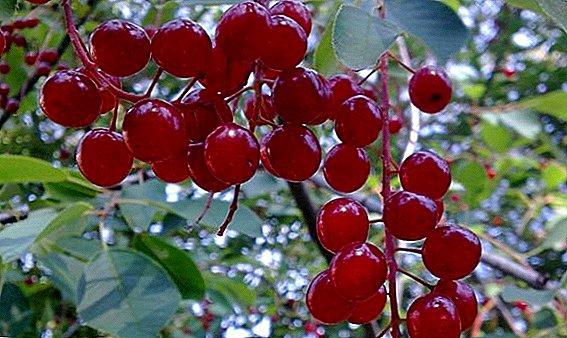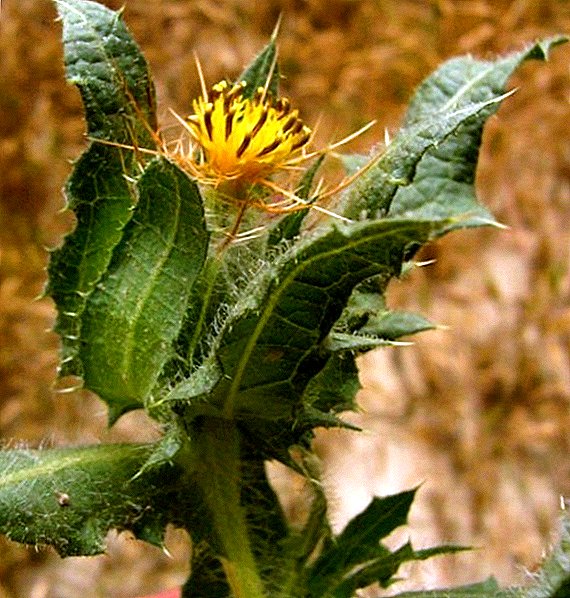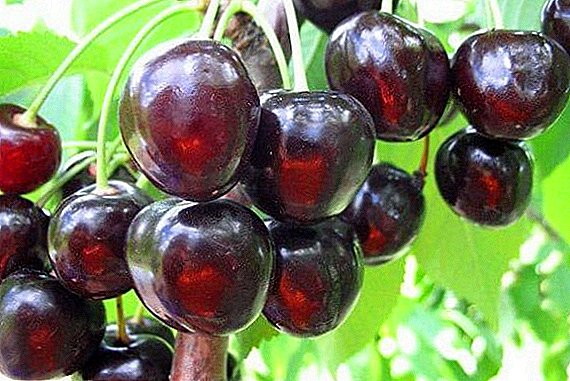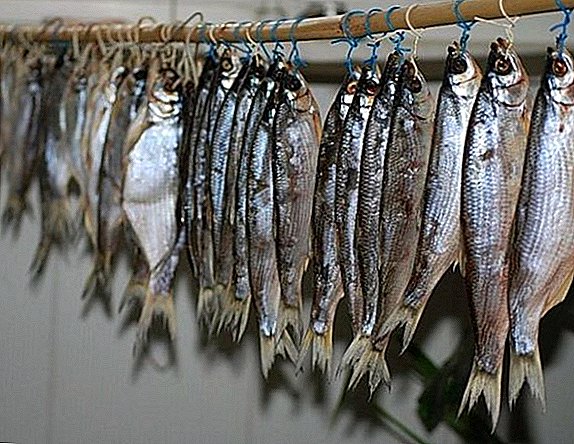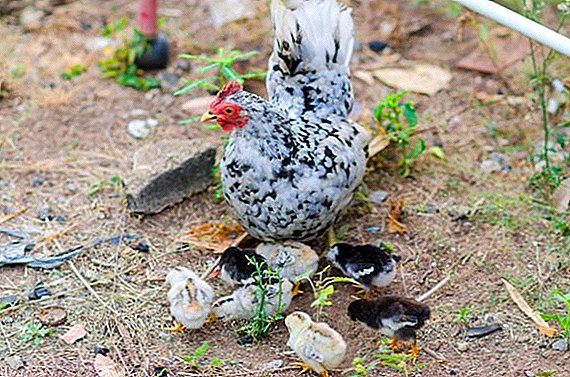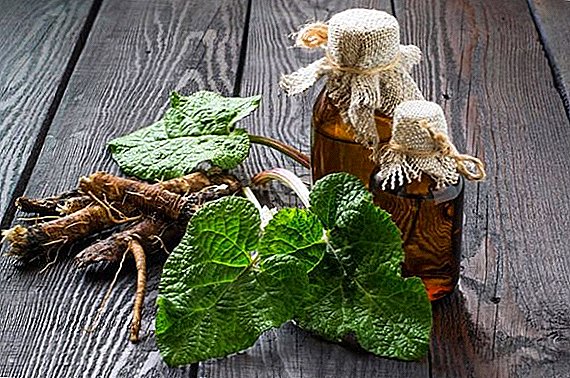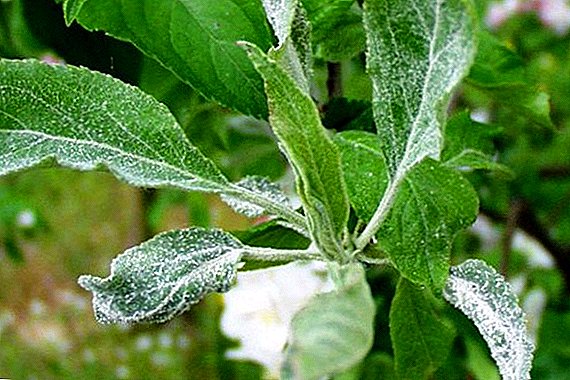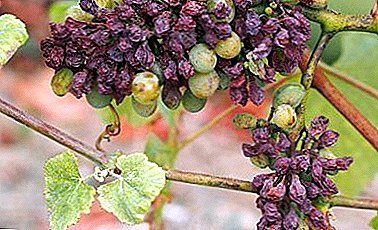
The vine accompanied humanity at all stages of its civilizational development, drawing strength from the earth and the sun.
And only in illness she needed the help of people.
Help the vine, knowing the disease and the degree of threat - further in the article description, control measures and photos of the affected leaves and fruits of grapes.
Diseases of grapes can be divided into two large groups: infectious and non-infectious. Each of them, in turn, includes subgroups. Below we take a closer look at the classification and symptoms of grape diseases.
What grape diseases are there?
Infectious
- Fungal diseases of grapes.
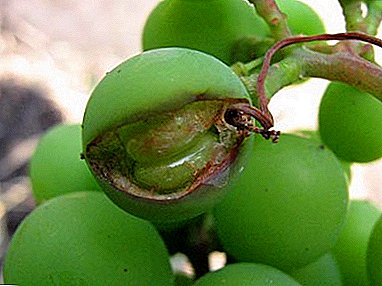
- Mildew (downy mildew).
- Oidium (pepelitsa, mealy dew).
- Alternaria (olive spot).
- Anthracnose (spotted, bird eye).
- Gray (botrino).
- Aspergillosis rot.
- White rot (white-mouth, "hail disease").
- Black rot (black mouth).
- Pink moldy rot.
- Rubella.
- Verticillosis (wilt).
- Apoplexy.
- Armillaria.
- Root rot.
- Diplodioz.
- Penicillosis.
- Fusarium
- Monilioz.
- Cercosporiosis
- Black spot (escoriosis, fomopsis, dry screeching).
- Gelmintosporiosis
- Septoriosis (melanosis).
- Esca (trunk disease).
- Eutipiasis (dry limb, dying off sleeves).
- Bacterial lesions grapes.
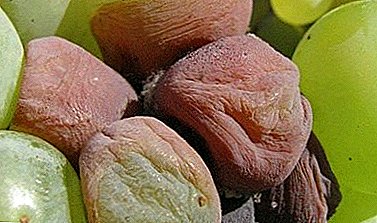
- Bacterial spotting.
- Sour (acetic) rot.
- Bacterial necrosis (bacterial wilt, Oleiron disease)
- Bacteriosis of berries.
- Pierce's Disease.
- Bacterial cancer.
Reference: Not all grape diseases are treatable: for some (bacterial cancer) only the radical method is possible - raskorchyovka followed by quarantine.
- Viral diseases of grapes.
- Short-knot (infectious degeneration).
- Yellow mosaic (chlorosis).
- Bordering veins.
- White mosaic (panashyur, variegation)
- Interstitial chlorosis.
- Golden yellowing.
- Flattened bole.
- Necrosis of the shoots.
- Resus mosaic virus, or mosaic arabis.
- Asteroid (star-shaped) mosaic.
- Virus wood striation of grapes.
- Red-colored virus.
- Virus marbling leaves.
- Necrosis of the veins.
- Leaves curling virus (golden yellow).
Reference: In the list "Viral diseases of grapes" only the first 4 positions are scientifically described. The remaining viruses are isolated, but, according to the results of observations, are represented in the vine in a latent form.
Non-infectious
 Diseases provoked by growing conditions.
Diseases provoked by growing conditions.
- Elementoses (diseases associated with nutritional deficiencies):
- chlorosis (lack of iron, zinc, manganese or boron);
- rubella (lack of potassium);
- shrinkage of the comb;
- Burns grapes.
- Scattering berries.
- Necrosis of wood vessels.
- Paralysis of the crests.
- Apoplexy of a trunk.
Reference: From the practical experience of local gardeners amateurs, it follows that only a part of the diseases of the grapes are known from the above list: mildew, oidium, anthracosis, chlorosis, rubella, bacterial carcinoma and elementoses.
A photo










How to determine the type of lesion?
The first clue is given by visual inspection at any stage of growth, the slightest deviation from the norm in the appearance of the plant. Alert gardener should and information about the appearance of an infectious disease in the neighboring area. An analysis of unfavorable weather situations during the winter-spring is also able to reveal the probability of an infectious lesion in the hive.
The first signal signs of health grapes are leaves.
- They may turn yellow and dry. not only from a lack of moisture in the dry period (the edaphic type of violation), mechanical damage to the vine or its age.
This feature is the leading sign of elementosis, when the plant lacks nitrogen, iron or other essential minerals in the soil.
- A change in the color of the leaf plate can also be a sign of a fungal or viral lesion: infectious chlorosis, golden yellowing, white (variegated) and yellow (chlorosis) mosaic, fusarium, escoriosis, septoria, and in the active phase - mildew disease;
- yellowing of young leaves in spring suggests infectious necrosis;
- Changes in the content of chlorophyll can be observed along the edge of the leaf or along the veins, which sometimes indicates a virus bordering the veins or the initial stage of mildew;
- drying of the edges of the sheet plate - Pierce's disease;
- leaf discoloration in the lower part of the bush is observed in a plant that becomes ill with the chronic form of Eski (a complex of pathogenic fungi).
- Leaf reddening often as a result of elementosis (lack of phosphorus), an early transition to the autumn phase of red grapes or fungal infection with rubella;
- with white rot, the leaves above the annular brown spots on the shoots also turn red;
- Premature leaf redness (with the exception of the main veins) is observed when a leaf curl virus and leaf reddening virus are damaged by a virus.
- Sheet rusting - a sign of Alternaria;
- pinhole lesions of the leaf plate - black spot;
- large rust-brown spots between the veins - a manifestation of fungal eski.
- Leaf curl As a phenomenon, it has a viral nature - golden yellowing, white mosaic, cortex or fungal - oidium.
- Browning leaf on the edge of the plate, it is characteristic of a disease of gray mold, moniliozom, or burnissure - a lack of potassium in the soil;
- dark spots speak of septoria;
- Brownish leaves also occur with chalcosporosis, verticillosis and ... with sunburn.
- Leaf brown typical of elementosis (with a lack of potassium) and serious damage with oidium;
- brown leaf spot plate - the probability of spotted necrosis.
- Appearance of a raid (mealy) on the underside of the leaf says mildews:
- easily erasable gray plaque on top and bottom - oidium;
- olive velvety plaque on the back of the leaf - cerkosporioz.
- Spots on the leaves may be a precursor of a serious disease or caused by a lack of trace elements in the plant nutrition:
- oily type transparent spots - a sign of downy mildew;
- if such spots form a pattern - we are talking about short-knot;
- ruby-colored spots - rubella symptom;
- small brown or black necrotic spots - pronounced black spot;
- necrotic spots with a black border occur with anthracosis;
- bright dot-like spots are the first manifestation of septoria.
- Seals and growths on the leaves (galls) are formed with the defeat of rubella, anthracosis, mildew.
- Wilting leaves for no apparent reason - a consequence of the defeat of the root system of grapes with arterial disease.
- Reduction in size and deformation of leaf blades is observed in fusarium;
- leaves shallow when eutypia;
- fan arrangement of the veins of the modified leaves is observed in chronic infectious degeneration - short-nodules.
Reference: Part of the list - diseases observed only in certain regions of viticulture (Italy, Spain, Moldova, etc.). For example: moniliosis, Pierce's disease.


Learn about other diseases and pests of plants that you may encounter in the garden: //selo.guru/ptitsa/bolezni-p/gribkovye/parsha.html, Rust, Bacterial Burn, Birch Sapwood, Apple moth, Lichen.
Symptoms of the disease
 Usually one sign, manifested only in particular sheet, is not enough for accurate diagnosis.
Usually one sign, manifested only in particular sheet, is not enough for accurate diagnosis.
Therefore, it is customary to compare 2-3 symptoms of the disease for the effectiveness of the selection of measures used.
- Anomaly vines manifested in the appearance on its surface of various spots:
- the whole shoot escapes with red-violet or black spots in the period of appearance of the first five leaves, sometimes merging, they ring the stem with the news - this is how the black spot of grapes appears during the growing season;
- brown spots on the stem turn into deep ulcers - anthracnose;
- brownish spots with gray down on young shoots - it is possible mildew;
- whitish spots in the kidneys, turning into a white plaque - powdery mildew;
- silver or brown spots - alternarioz.
- Vine gets a red tint due to the confluence of brown and pink-gray spots on the shoot under anthracnose.
- Shoots dry until complete destruction of the bush with the defeat of eskoy;
- the drying of the vine together with the skeletal branches can end the process of mildew disease;
- on young shoots with black rot as a result of longitudinal necrosis wood cracking occurs;
- thinning of the shoots infected with the virus of the furrow of the wood also leads to the drying out and death of the plant.
 Brown color the vine usually acquires after frosts, but it becomes a painful symptom with the mucus of the bark and the putrefactive color of the slice — on this basis, oidium or eutipiasis can develop;
Brown color the vine usually acquires after frosts, but it becomes a painful symptom with the mucus of the bark and the putrefactive color of the slice — on this basis, oidium or eutipiasis can develop;- dark brown spots on the bast after wintering are spotted necrosis.
- Spring growth characterized by ugliness and randomness of shoots - this is how bacterial necrosis manifests itself.
In the initial stage of the vegetative cycle, the first signs of infection on grapes can already be seen:
- intensive shedding of flowers and ovaries may be the result of insufficient pollination in the same-sex type of flower, or adverse weather conditions at the time of pollination, but the same symptoms are accompanied by Pierce's disease;
- inflorescences wither under white bloom - the first manifestations of downy mildew;
- gray fluffy plaque covering the top of the inflorescence indicates the appearance of gray rot;
Waiting for the period of formation of the ovary and the ripening of the fruit, you can get a few more indicators specifying the diagnosis:
- Fruits, not having time to be filled with juice, dry, they shrivel, acquire a bluish color - this indicates a defeat by mildew, cricosporia;
- if the plant is infected with the causative agent of black or white rot - the berries, wrinkling, turn black or turn brown and mummified;
- in case of verticillosis, after the dried leaves, the turn of fruits begins;
- in the active phase of anthracosis, the grapes do not even have time to ripen: the berries dry and crumble;
- sometimes when overloading the bush, the cause of the drying up of the berries is the bending of the comb, which disrupts the nutrient supply to the fruits.
 Wilting brushes at the time of maturation indicates a defeat mildew or oidium;
Wilting brushes at the time of maturation indicates a defeat mildew or oidium;- wilting of individual berries with the acquisition of disgusting taste is characteristic of infection by the virus of golden yellowing;
- Edaphic factors can also be the cause of wilting: sunburn, moisture deficiency, overload of the bush;
- berries crumble to maturity if a short-node virus is infected.
- Rotting berries grapes affected by gray rot, oidium, moniliasis;
- the appearance of fruit flies - fruit flies detect acid rot;
- in conditions of hot weather, aspergillosis rot develops most intensely, turning clusters into a brown spore-bearing mass.
- Gray bloom oidium is given on the grapes;
- pink mold rot formed on fruits during storage and is a spot with a white coating, in the cut of the fruit - pink foci of sporulation;
- olive plaque is a sign of chalcosporosis;
- white bloom covering the whole berry is typical for mildew infection.
- Stains on the berries may be red with elemental (iron deficiency), gray with black edge with anthracosis, dark gray, almost at the connection with the stem - when infected with mildew;
- rust stains when burned with copper preparations;
- brown spots on grapes appear with gray rot;
 light brown with a gray fuzzy visible in the maturation phase with penitsiloze;
light brown with a gray fuzzy visible in the maturation phase with penitsiloze;- the bacteriosis of the berries begins with a light beige spot, which grows inside, as if “eating” the berry from the inside (a single lesion, for individual berries).
- Blackening berriescovered with pycnidia (tubercles) is observed in diplodioz.
- If a dark brown spots they ring the crest and the branches coming from it — paralysis of the crests manifests itself;
- Partial shrub brushing occurs when affected by downy powdery mildew and Pierce's disease.
Resistant to many diseases of the grape variety: Gourmet, Victoria, Bianca, Laura, Valentine, Cabernet, Timur, Rosmus, Attica, Platovsky, Pervozvanny, Teacher's Memory, Ruslan, Rosalinda, Kesha, New Century, Furor, Sponsor, Black Panther, Sphinx, Rusbol, Athos, Ruta, Tabor, Monarch.
General changes in the condition of the bush
Especially convincing for the assumption of the disease of the vine is the general change in the condition of the bush, its morphology, growth rates and phases of development.
- The bush fades without any external reasons: look for the cause in the ground - the root system is affected by verticillus;
- as a result of a lesion with verticillus, arillariasis, fusarium, the death of a plant, otherwise apoplexy; the truth is that apoplexy of the vine can be the result of a prolonged drought, when the plant is depleted and simply unable to bear the hot weather;
- Another cause of sudden wilt may be an acute form of eski, bacterial spotting, bacterial necrosis or fusarium.
- Modifying the woody part of the bush:
 destruction of phallus phloem, when films of mycelium are found under the bark — the causative agent of armilliarosis, which has risen from the plant's root system;
destruction of phallus phloem, when films of mycelium are found under the bark — the causative agent of armilliarosis, which has risen from the plant's root system;- the same effect on the trunk of a grape bush root rot manifests itself;
- the rotting of the affected parts of wood and the death of entire branches is characteristic of escoriosis;
- points and strokes on dead bark - the presence of gelmintosporioza;
- necrotization of the tissues of the woody part of the plant with the formation of growth, in place of the previously performed pruning is a convincing sign of eutipiasis;
- the appearance of a white or brown fleshy tumor on the body of the vine means the defeat of the plant with bacterial cancer.
- Stunting, decrease in fruit bearing, easy removal of a plant from the ground together with its roots are signs of root rot or bacterial cancer;
- the same manifestations can be seen on adult bushes of eight years of age, the cause will be fungal short-handedness.
- Short spot detection as a change in the normal form in young shoots is explained by root rot, fusarium, eutipiosis, Pierce's disease.
- Pasvy growth of shoots - one of the signs of fusarium;
- lateral tillering of the vine is a symptom of infectious degeneration.
 The main feature of non-infectious diseases of grapes is their locality: the symptoms are not transmitted to nearby plants.
The main feature of non-infectious diseases of grapes is their locality: the symptoms are not transmitted to nearby plants.
And, although in external manifestations there is a frightening resemblance to all sorts of infections, they are not difficult to eliminate:
- soil structure relief;
- the introduction of its composition of the missing minerals;
- assisting the plant in difficult periods of weather anomalies (drought, prolonged rain);
- covering the plant from low temperatures (at night, in winter);
- feeding a weakened plant with organic matter;
- changing the whole agricultural background for the better.
A strong, well-groomed plant successfully confronts any infection. And if preventive measures of biological, mechanical and chemical treatment are still carried out in the garden, then the chances of pathogenic organisms are even lower.
But only recently bred hybrids, in the gene structure of which, in the process of selection, resistance to fungal and some bacterial and viral pathogens was laid, have a full guarantee. Varietal selection is the most reliable protection against infectious diseases.
Watch a video about protecting grapes from the disease in the spring




 Brown color the vine usually acquires after frosts, but it becomes a painful symptom with the mucus of the bark and the putrefactive color of the slice — on this basis, oidium or eutipiasis can develop;
Brown color the vine usually acquires after frosts, but it becomes a painful symptom with the mucus of the bark and the putrefactive color of the slice — on this basis, oidium or eutipiasis can develop; Wilting brushes at the time of maturation indicates a defeat mildew or oidium;
Wilting brushes at the time of maturation indicates a defeat mildew or oidium; light brown with a gray fuzzy visible in the maturation phase with penitsiloze;
light brown with a gray fuzzy visible in the maturation phase with penitsiloze; Resistant to many diseases of the grape variety: Gourmet, Victoria, Bianca, Laura, Valentine, Cabernet, Timur, Rosmus, Attica, Platovsky, Pervozvanny, Teacher's Memory, Ruslan, Rosalinda, Kesha, New Century, Furor, Sponsor, Black Panther, Sphinx, Rusbol, Athos, Ruta, Tabor, Monarch.
Resistant to many diseases of the grape variety: Gourmet, Victoria, Bianca, Laura, Valentine, Cabernet, Timur, Rosmus, Attica, Platovsky, Pervozvanny, Teacher's Memory, Ruslan, Rosalinda, Kesha, New Century, Furor, Sponsor, Black Panther, Sphinx, Rusbol, Athos, Ruta, Tabor, Monarch. destruction of phallus phloem, when films of mycelium are found under the bark — the causative agent of armilliarosis, which has risen from the plant's root system;
destruction of phallus phloem, when films of mycelium are found under the bark — the causative agent of armilliarosis, which has risen from the plant's root system;